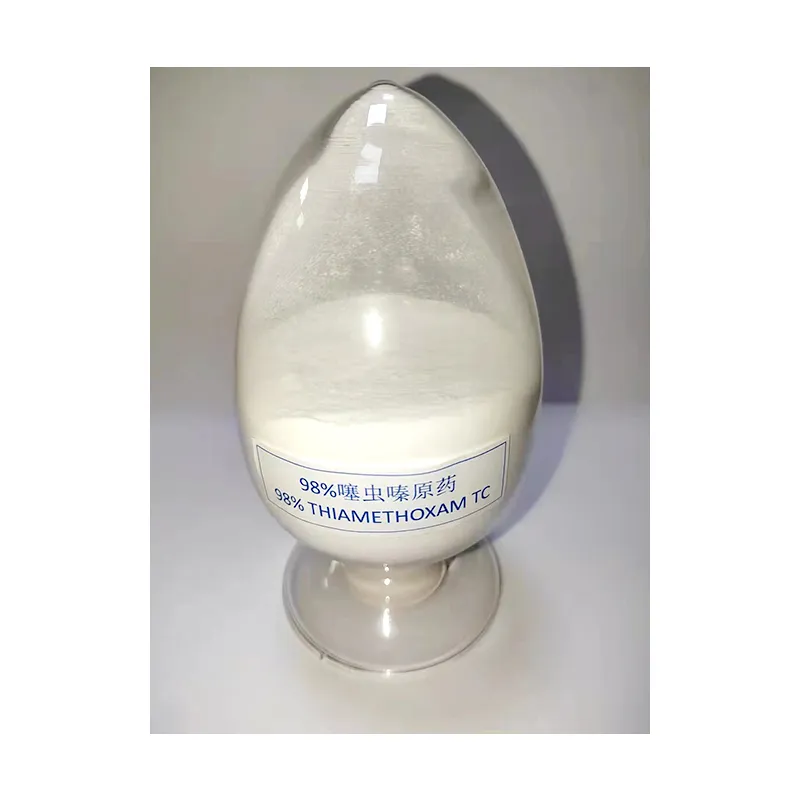

Nanomaterials Transform Numerous Fields
Nanomaterials can facilitate the creation of small-scale products and processes at the nanoscale. Some examples of the application of nanomaterials include electronics, nanomaterials can be used to produce faster and more efficient devices; in medicine, they can be utilized to develop targeted drug delivery systems; and in energy, they can improve energy conversion and storage.

Clothianidin
Feb . 15, 2025 06:23
Back to list
Clothianidin
Clothianidin insecticide has emerged as a critical tool in the realm of pest management, especially within the agricultural sector. Known for its effectiveness against a wide range of pests, this neonicotinoid insecticide has carved out a niche due to its unique properties and application benefits.
Critically, the application of clothianidin must align with integrated pest management (IPM) practices. Using it as a part of an overall pest management strategy allows for sustainable agriculture. When combined with crop rotation, habitat diversification, and biological control methods, clothianidin can contribute to an effective, environmentally-conscious pest management strategy. Professional entomologists and agronomists often advocate its usage due to its relatively lower environmental impact when used correctly. Nevertheless, its use is not without controversy, particularly concerning its potential effects on pollinators. Studies have raised concerns over the impact of neonicotinoids on bee populations. Hence, experts recommend its careful integration into pest management programs, ensuring that application timing and methods are adjusted to minimize exposure to non-target organisms like bees. Due diligence is necessary before employing clothianidin in any agricultural setting. Accurate pest identification and monitoring, along with adherence to recommended application rates and timing, are crucial to maximize efficacy while mitigating environmental risks. Farmers should keep abreast of evolving research and regulations surrounding clothianidin to ensure compliance and the health of their ecosystems. In conclusion, clothianidin offers numerous benefits to the agricultural industry, from its systemic action to its extended protection. However, the responsibility lies with the user to apply it judiciously, balancing effective pest control with environmental stewardship. By doing so, clothianidin can significantly contribute to the sustainable production of healthy, pest-free crops, underscoring its vital role in modern agriculture. As part of a comprehensive pest management strategy, it complements other methods and technologies, helping drive agricultural productivity in a sustainable direction.


Critically, the application of clothianidin must align with integrated pest management (IPM) practices. Using it as a part of an overall pest management strategy allows for sustainable agriculture. When combined with crop rotation, habitat diversification, and biological control methods, clothianidin can contribute to an effective, environmentally-conscious pest management strategy. Professional entomologists and agronomists often advocate its usage due to its relatively lower environmental impact when used correctly. Nevertheless, its use is not without controversy, particularly concerning its potential effects on pollinators. Studies have raised concerns over the impact of neonicotinoids on bee populations. Hence, experts recommend its careful integration into pest management programs, ensuring that application timing and methods are adjusted to minimize exposure to non-target organisms like bees. Due diligence is necessary before employing clothianidin in any agricultural setting. Accurate pest identification and monitoring, along with adherence to recommended application rates and timing, are crucial to maximize efficacy while mitigating environmental risks. Farmers should keep abreast of evolving research and regulations surrounding clothianidin to ensure compliance and the health of their ecosystems. In conclusion, clothianidin offers numerous benefits to the agricultural industry, from its systemic action to its extended protection. However, the responsibility lies with the user to apply it judiciously, balancing effective pest control with environmental stewardship. By doing so, clothianidin can significantly contribute to the sustainable production of healthy, pest-free crops, underscoring its vital role in modern agriculture. As part of a comprehensive pest management strategy, it complements other methods and technologies, helping drive agricultural productivity in a sustainable direction.
Prev:
Next:
Latest news
-
Uncover the Benefits of Sodium ChlorateNewsJun.24,2025
-
Sodium for Sale: Your Essential ResourceNewsJun.24,2025
-
Raw Materials in Chemical IndustryNewsJun.24,2025
-
Potassium Hydroxide: Versatile Solutions for Your NeedsNewsJun.24,2025
-
Organic Pesticides and Chemical Raw Materials: Building a Sustainable FutureNewsJun.24,2025
-
Discover Premium Chlorine Tablets TodayNewsJun.24,2025
-
Zinc for Sale: Your Essential ResourceNewsJun.04,2025
Hot Products


















